A workout tracker can be a valuable tool in your fitness journey. Here’s how to use one (plus an example you can print).
Each year on January 1st, we make an impressive list of resolutions. We enthusiastically declare that we’ll eat healthier, go to the gym, and get out of debt. Unfortunately, these resolutions often degrade into a string of unmet goals and frustration.
Instead of focusing on broad resolutions that most of us never meet, let’s get specific about our fitness goals. Do you want to run your first 5K? Compete in a Crossfit competition? Ride a century? Lose body fat and gain muscle mass?
Whatever your goals, the right tools can help you get there. Forget about the fancy supplements or the newest fad, and focus on something more straightforward. A fitness log is a basic but effective tool that can help you stay focused, mark your progress, and keep you motivated as you pursue your fitness goals.
If you’ve never used a fitness log before, you may wonder what it is and how it can help you. Let’s dive in to learn more about this powerful tool and how it can help you crush your goals and turn them into life-long habits.
It All Starts With a SMART Goal

According to research from Dominican University1, those who write down their goals are more likely to accomplish them than those who don’t. But writing goals down isn’t a guarantee of success. Like most things, the devil is in the details. Life happens, and even those with the best intentions get off track as time passes.
Enter: SMART goals. This practice is a widely accepted strategy to turn a broad dream into an achievable goal.
S.M.A.R.T. goals are:
- Specific. Your goal needs to be intentional and very specific. “I want to get fit” isn’t effective. Instead, focus on the goal’s who, what, where, when, and how.
- Measurable. “I want to run more” is too broad. Instead, try inserting numbers into your goal to track your progress.
- Achievable. Big goals sound great on social media, but they can be overwhelming in reality. Make your goal something you can actually attain.
- Realistic. If you’ve never run a mile before, setting a goal of running a marathon in 2 months isn’t practical. And it can be dangerous to both your body and confidence. Instead, set a goal that is realistic in your life as it is today.
- Timed. Timelines are essential to goal-setting. “I want to run a 5K” sounds great in theory, but when? Adding a goal race gives you a deadline.
Related: Calories burned walking a mile
Here’s an example of how to set goals that follow the SMART methodology: I will run my first 5K race at the Hot Chocolate 5K (specific and realistic) in November (timeframe). To get ready, I will follow the Couch to 5K App (achievable) and run/walk four days a week (measurable) in my neighborhood.
What Is a Fitness Log?
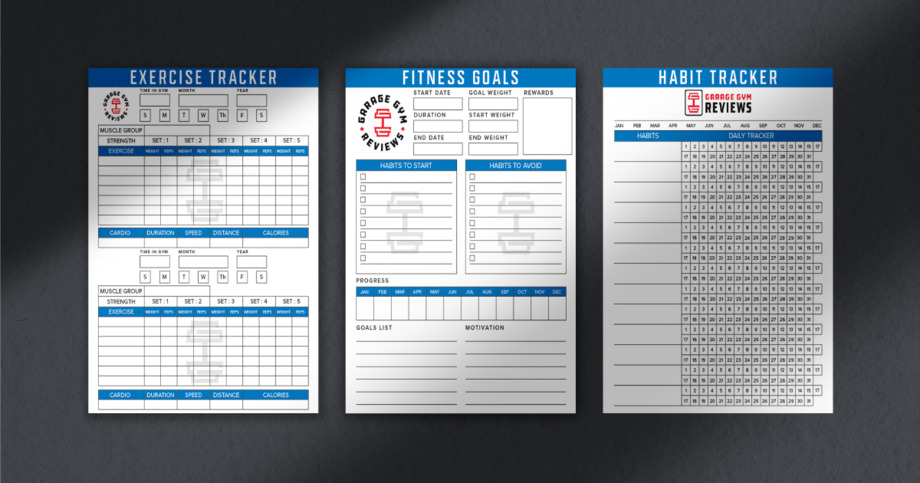
We now have a SMART goal to work with. What comes next? You guessed it—we need a tool to help us keep track of our training sessions and monitor our progress.
So what is a fitness log? At its most basic, it’s a record of your workouts. You can use a simple excel spreadsheet or a workout app that integrates across all your devices. But no matter the format, if you use it correctly, workout logs let you see your journey from start to finish.
Fitness logs are highly customizable based on your needs but usually track things like:
- What exercise you did on a given day
- How long and intense the workout was
- The time of day you worked out
- Weather conditions (if you were outside)
- How you felt (excellent, sick, worn-out, on your period, etc.)
- Health metrics (heart rate, calories burned, etc.)
- Weights and reps (for strength training)
- Food and liquid (what you ate/drank before, during, and after the workout)
Who Can Benefit From a Fitness Log?

It may sound trite, but anyone with a fitness goal can benefit from using a fitness log. They allow you to track workouts and see gradual weight loss and changes in your body measurements, among other improvements in your fitness and wellness. Exercise logs also call out personal records so you can celebrate the wins along the way.
Remember, your goals don’t have to be big to reap the benefits of using an exercise log. Setting a goal of working out for 15 minutes every day is significant if you’re a beginner. Don’t be afraid to start small; you’ll be amazed at how quickly your progress adds up.
RELATED: No Time? No Problem: Try These 15-Minute Workouts
I honestly can’t think of anyone—beginners to experts—who couldn’t benefit from using one.
I became a true believer in using a workout log after discovering a nutritional gap while training for my first trail marathon. Looking back at my workout journal, I noticed a consistent pattern of sluggishness in the day or two after any long runs.
After talking with my coach, she asked how much I ate during the runs. I’ve always had difficulty eating while running, so I only used liquid nutrition. She suggested I try some whole-food gels and see if that helped. It made a huge difference, and I’m not sure I would have figured it out without a logbook of data to reference.
Free Fitness Journal Downloads
Here is a list of free fitness journals you can download today. Take a look at these and find the one that best suits your personal style. You’re far more likely to use an exercise log if it’s set up the way you like!
Download our free fitness journal PDF below.
What to Write in Your Fitness Log
How much information you put into your fitness log is 100% up to you. If you’re a data nut like me, you’ll quickly think that more is better. If you want to make the most of the tool, you should plan to add at least some of the following.
Workout Details
Think of your fitness journal as a place to paint a complete picture of your workout. Take note of the following:
- Date and day of the week (most templates will have a calendar already built-in)
- Start and finish times
- The activity you did
Keeping track of these things will help you with a few things. First, you’ll be able to see how many days a week you’re working out. Second, you’ll notice whether you perform better on certain days of the week or certain times of the day. If you have a period, you’ll also be able to track performance across your cycle, which can be very useful if you’re training for a race or competition.
Here are a few other details to consider adding to your fitness planner.
- Warmup: Did you warm up before your workout? If you didn’t, was the beginning of the exercise harder?
- For strength training: If you’re weightlifting, add the information you’ll need to track your progress. How many reps and sets did you do? How much weight did you lift? Note if you were lifting at home, at the gym, or while traveling.
- For cardio: For cardio activities, note the location, length of training, average speed, and level of intensity. Running a 30-minute hill workout outside in the summer is entirely different from running for 30 minutes on the treadmill.
Notes About Your Workout
Numbers don’t tell the whole story, so adding notes about how you felt during your workout is essential. If your daily workout seemed harder than expected, think about why that could be. Did you not sleep well the night before? Are you under a lot of stress at work? Were you sick last week? These outside factors can all influence how you perform on a given day.
Your weightlifting numbers or running mileage may also hit a plateau. But suppose your notes indicate that your powerlifting set felt easier, or you ran with the same intensity and speed at a lower heart rate. In that case, you’ll know you’re still improving.
Meals

Nutrition is an important component of fitness. Have you heard the saying that you can’t outrun a bad diet? We have found this to be true regarding any workout goal. If you want to build a six-pack, you have to incorporate nutrition into your planning. The same applies if you’re going to shave time off your marathon pace, lift heavier weights, or decrease body fat.
The good news is that your training log is a place to talk about your nutrition. Exactly what you decide to track is based on your goals.
If one of your goals is weight loss, you should track all the foods you eat throughout the day. Calorie counts can help you determine if you’re achieving a calorie deficit. If your goal is to lose body fat and gain muscle mass, you may want to also include the macronutrients in your food. Learn more about this in our guide: How to Lose Body Fat: What the Science, and Experts, Say Works.
On the other side of the coin, you may only care about how food affects your performance. If that’s the case, you’ll only need to note what you ate before, during, and after your workout. You’ll likely be able to see that certain types of food give you more energy.
No matter how much detail you include, tracking your meals in the exercise log can help you see trends in how food affects your performance.
Sleep Data
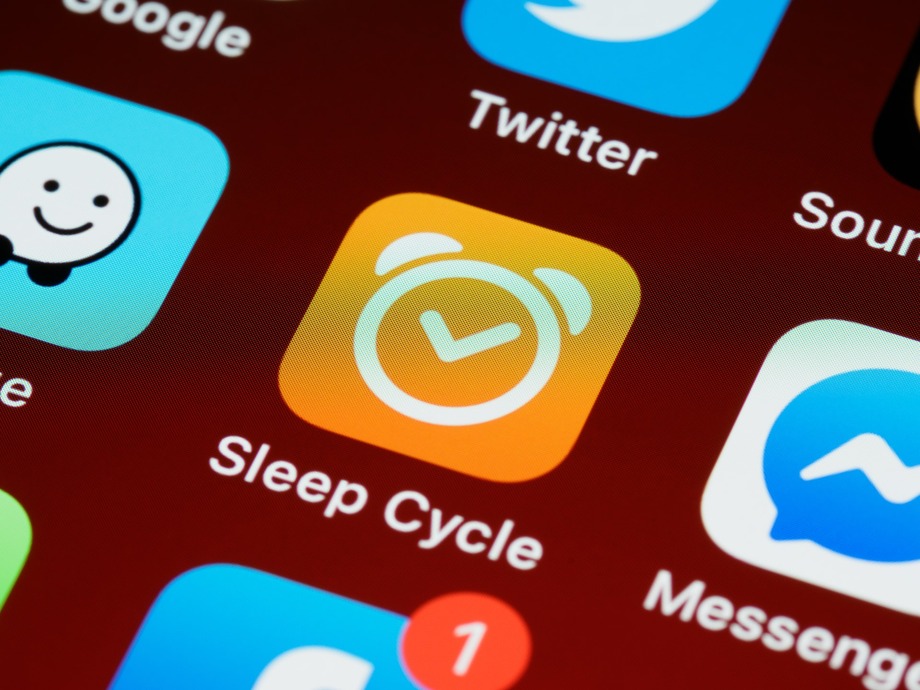
If you think sleep plays a part in your health and wellness, then you’re right.
According to the book Sleep Disorders and Sleep Deprivation: An Unmet Public Health Problem, indexed by the National Institutes of Health2, “the cumulative effects of sleep loss and sleep disorders have been associated with a wide range of health consequences including an increased risk of hypertension, diabetes, obesity, depression, heart attack, and stroke.”
Your day-to-day fitness performance can also suffer from a lack of sleep—especially if it’s a chronic problem. One way you can help track the correlation is by using wearable technology to monitor your sleep cycle. Many of us wear watches that track our steps, heart rate, and mileage. Using them to follow our sleep is the next step.
Sleep medicine expert Colleen Lance, MD, of the Cleveland Clinic3, thinks wearables are worthwhile. According to Dr. Lance, there are three reasons you should consider tracking your sleep:
- You frequently wake up at night
- You’re tired throughout the day
- You want to optimize your performance as an athlete
Wearable sleep technology often has functionality that lets it link to online fitness trackers. This will allow you to see how sleep affects your workout routine.
Body Metrics

Have you ever spent weeks exercising and focusing on a healthy diet, and the number on the scale goes up? Many of us have, and there’s a very good reason for that. The scale doesn’t tell the whole story regarding health and fitness. In fact, your weight is one of the least important factors in your total health picture.
Keep in mind that the number on the scale can fluctuate by several pounds throughout the day! If you’re working out consistently, your body will change to adapt to the demands of your exercise And in some cases, those changes will actually result in weight gain—for example, when you gain muscle mass but lose body fat.
Additionally, a 2015 study in the Journal of the American Heart Association4 shows that daily exercise increases fitness by strengthening your heart, increasing circulation, improving oxygen uptake, and gaining muscle stamina.
But these things can be hard to measure or get excited about in the short term. So, we can use our fitness log to track other changes in our body metrics. They will let you recognize if you’re losing weight and gaining muscle. Here are a few metrics you can follow.
- Body weight: If you’re going to use the scale, do it at the same time every day. I like to weigh myself right when I get out of bed in the morning.
- Body measurements: Measure your chest, waist, hips, upper arms, and thighs. This can be a great indicator of fat loss since one pound of fat takes up more space than one pound of muscle.
- Body fat percentage: There are several ways to measure this, using calipers or a body fat scale.
- Calories burned: You may not be impressed by burning a few hundred calories in a day. But, when you can add up all the calories you’re burning over an extended period, it can be pretty motivating.
Your Goals
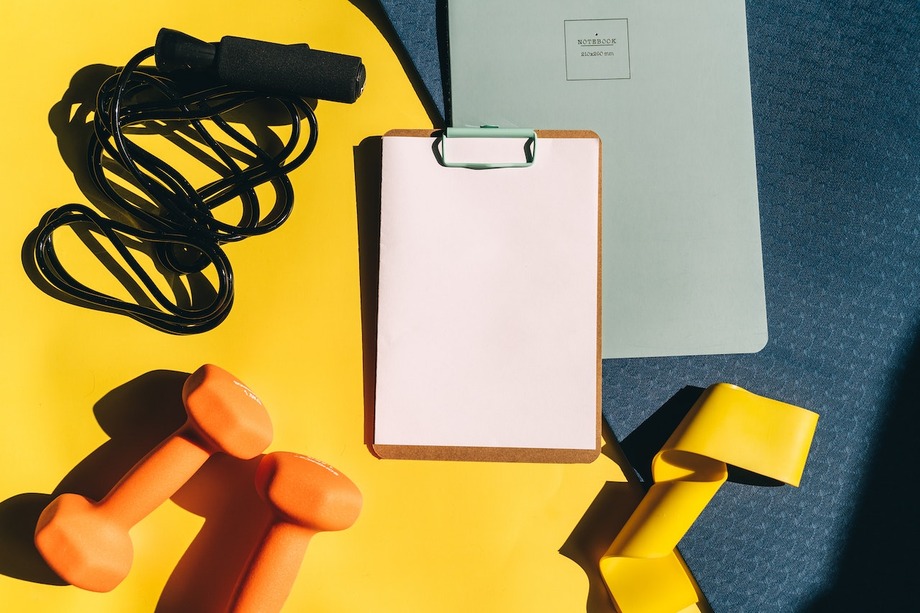
Remember those SMART goals we talked about? Your exercise log is an excellent place to write them down. In fact, the PDF journal we linked to earlier has a habit tracker that’s perfect for breaking your goals down into daily and weekly activities that add up to success.
If it’s true that thoughts can create reality, imagine what a consistent practice of writing this down can do for you!
A study published in Organizational Behavior and Human Performance5 agrees. Edwin Locke found that our conscious ideas regulate our actions. Specific goals (like SMART goals) produce a higher level of output than a broad goal of “do your best”. Locke also found that you’re more likely to make good choices if you track your progress.
That’s a fancy way of saying that you have a better chance of hitting your SMART goals if you use a fitness log to write stuff down along the way!
Let’s go back to our earlier example of wanting to run our first 5K at the Hot Chocolate race in November. We were going to use the Couch to 5K app to help us get there. This is the kind of goal that’s perfectly suited to keeping track of in the fitness log.
We must set up some consistent routines to cross the finish line at our first 5K. Here are the habits I would track:
- Running 4 to 5 days a week
- Healthy eating to power our runs
- Stretching to avoid injury
- Getting enough sleep
As you can see, our big marquee goals can and should be broken down into smaller ones that we can track on a daily and weekly basis
Digital vs Paper Fitness Log
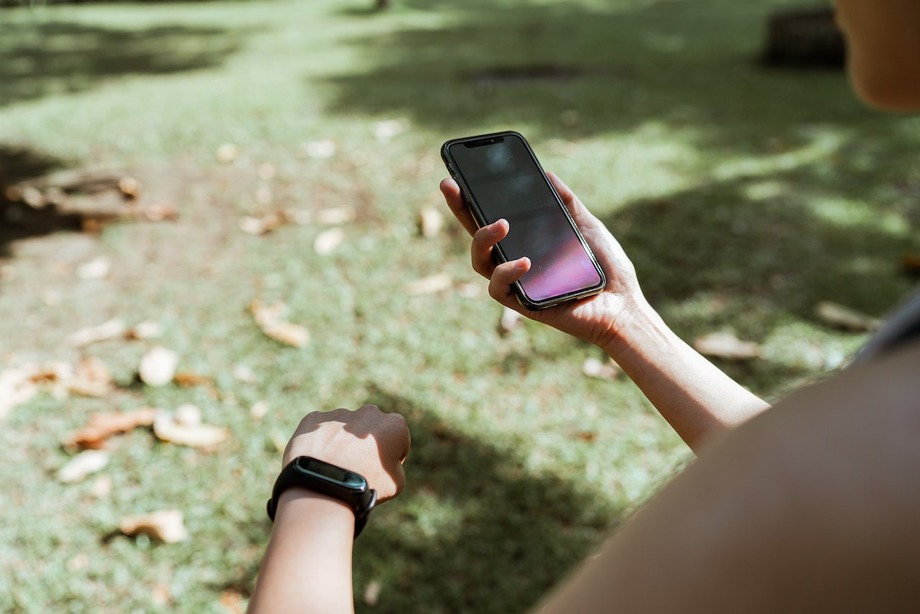
When it comes to digital and paper fitness logs, it’s all about your personal preference. There are pros and cons to both options.
An incredible amount of digital exercise trackers can be found on any app store. Many have high functionality and link to multiple devices, including your iPhone and fitness tracker. Digital logs allow you to see data in various ways, graph your progress, and they are accessible anywhere. A big negative is that all your data is “out there.” Be sure to choose a product that has privacy protection in place.
Related: Best probiotic
For those of us who love putting pen to paper, a more traditional workout journal may call to you instead. You can find beautiful, rustic journals that you can throw in your gym bag and update during or after your daily workout. Physically writing things down can encourage you to connect more deeply with the experience. It can also give you a much-needed break from our highly digitized lives. One big con to a physical journal is that all that data is lost forever if you lose it.
How to Make Your Own Fitness Log
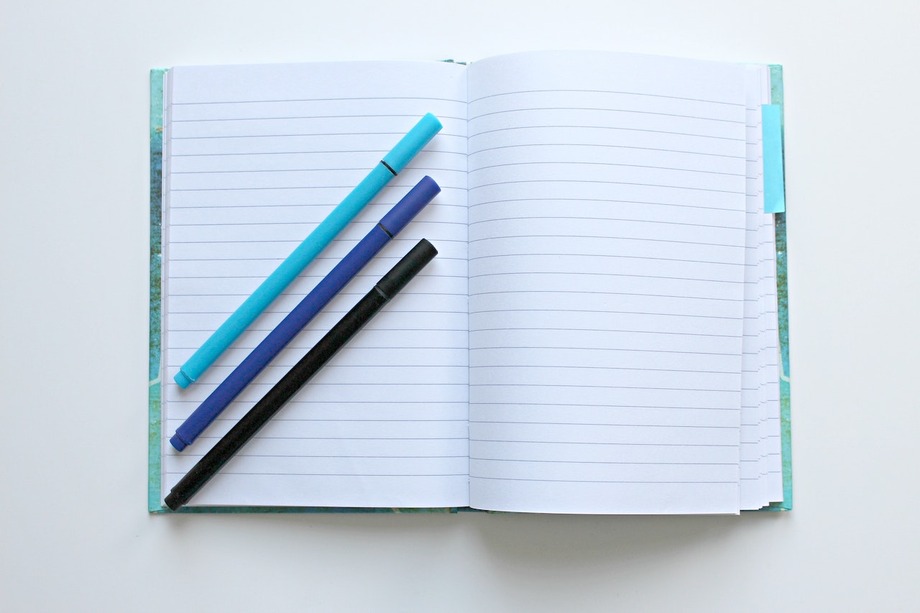
There are quite a few fitness logs you can purchase on Amazon or Etsy if you want something done for you. We’ve also linked to several free resources earlier in this article. On the other hand, if you’re into digital fitness trackers, there are a lot of apps to look at that link directly to your wearable device.
But you can start much simpler in the beginning to test the waters. If that sounds like you, take heart because it’s straightforward to make your fitness log from scratch. Here are a few questions to ask yourself before getting started.
- Will a template with prompts inspire you to write more about your fitness journey?
- Does filling out a weekly calendar sound good to you? Or do you prefer longer daily sections to include more detail?
- What about a blank journal? A hard-bound book with blank pages gives you total autonomy over what you include.
Knowing what type of planner will suit your needs will go a long way to ensuring you actually use it.
Here are examples of what to include in your fitness journal for various goals.
I’ll start with our earlier example goal of running our first 5K at the Hot Chocolate 5K in November. Here are some things I might write down for my first several workouts.
- Monday, Oct 3. Today, I ran for twenty minutes straight! This was the first time I ran so long without stopping, and it felt amazing. I was a little nervous when I saw this session in the C25K workout plan, but I did it anyway. Before I started, I had a banana and a big glass of water. I ran with my new favorite running playlist and hit an average pace of 12:30 per mile. It was sunny, cool, and perfect this morning. I walked for ten minutes to cool down and then stretched for another 5 minutes. I’m so psyched about hitting this milestone!
- Tuesday, Oct 4. Feeling a little sore today after yesterday’s long run. Today’s workout included more walking segments; I’m glad because I needed them! I’m going to focus on stretching more today, rolling my legs, and continuing to eat healthy. My average pace was 15:45.
- Thursday, Oct 6. I woke up with a tickle in my throat today, and I didn’t sleep great last night. I still hit my workout, but I felt a little sluggish. I’m hoping this doesn’t last too long and I can get back to feeling great. I walked a little more than the app prompted me, but I still got out there. Average pace today was 16:00 miles.

A general fitness goal may look different. Suppose your goal is to lose a certain amount of body fat and gain muscle mass. In that case, you’re going to be focused a lot on nutrition, and your training program will consist of a combination of weight lifting and cardio.
Related: Cardio vs Strength Training: Is One Type of Exercise Better Than The Other?
- Sunday, Oct 2. Meal prep today. I made steak and chicken for salads for the entire week, prepped my smoothies, and planned out dinners. Feeling good about food for the week; this meal plan is a good balance of macros and calories for a 40-year-old woman.
- Monday, Oct 3. Morning weight 140lbs and 26% body fat. I took a progress photo since I know my weight will likely increase as I focus on weight lifting.
- 30 minutes of HIIT this morning at the gym. This session seemed to focus on all the muscle groups at once!
- I had a ton of energy during the set and still feel great several hours later.
- Ten-minute warmup on the elliptical and ended with some foam rolling.
- I had my protein smoothie right after I was done. Lunch was a big salad with steak; dinner was chicken with roasted veggies.
- Tuesday, Oct 4. Morning weight 141lbs. Cardio day today.
- 60 minutes zone 2 running outside in the neighborhood.
- I had to stop and walk a few times to keep my heart rate down, but I stayed in the fat-burning zone the entire time.
- Protein smoothie after the run. Big salad with chicken for lunch; steak and veggies on corn tacos for dinner.
If your goals are more holistic, your fitness log entries will also be. In addition to activity details and body metrics, consider including notes about meditation, stress relief techniques, yoga, and mindfulness.
The point is that your fitness journal can be anything you need. Your workout log will look different from mine, and that’s okay.
You may like to write in a stream of consciousness, or keep it short and to the point with bullets. You may want to include specific numbers on calories and macros, or keep it more general.
Any format is fine; this is your tool to help you accomplish your goals. Take that and run with it.
Final Thoughts on Fitness Logs
An exercise log can be a powerful tool for tracking your fitness journey and pursuing your goals. That, in combination with setting purposeful SMART goals, will give you a huge leg up when it comes to making forward progress.
As with anything new, take some time in the beginning to see what works for you. If you love the idea of a pen and paper journal but find you’re not using it, give an app a try. If you find that some of the fitness tracker apps are too data-driven, take a look at one of our templates. The idea is to find the tool and methodology that works for you, so you use it.
Now, go out and crush those goals!
References
- “Goals Research Summary.” Dominican University of California, https://www.dominican.edu/sites/default/files/2020-02/gailmatthews-harvard-goals-researchsummary.pdf. Accessed 25 October 2023.
- “Extent and Health Consequences of Chronic Sleep Loss and Sleep Disorders.” NCBI, https://www.ncbi.nlm.nih.gov/books/NBK19961/. Accessed 25 October 2023.
- “Sleep Cycle Tracking on Your Fitness Tracker.” Cleveland Clinic, 10 October 2018, https://health.clevelandclinic.org/3-reasons-to-track-your-sleep-on-an-app-or-wearable-device/. Accessed 25 October 2023.
- Linden, David J. “The Truth Behind ‘Runner’s High’ and Other Mental Benefits of Running.” Johns Hopkins Medicine, https://www.hopkinsmedicine.org/health/wellness-and-prevention/the-truth-behind-runners-high-and-other-mental-benefits-of-running. Accessed 25 October 2023.
- Locke, Edwin A. “Toward a Theory of Task Motivation and Incentives.” Organizational Behavior and Human Performance, vol. 3, no. 2, 1968, pp. 157-189, https://www.sciencedirect.com/science/article/abs/pii/0030507368900044. Accessed 25 October 2023.
Further reading

Balance exercises aren’t only for seniors. Find out how balance training can help give you an edge on the playing field! Read more

The Synergee Games Cerakote Bar is very much a more budget-friendly Rogue Cerakote Ohio Bar. It's not made in the USA and uses some different components like a thinner shaft and bearings instead of bushings, but for the price point, this is a great alternative for those wanting a cool looking CrossFit Barbell. Read more

A thinner bumper plate made with quality virgin rubber. See more in our Rogue Echo Bumper Plates review on these budget friendly plates. Read more

In this El Jefe pre-workout review, we tested one of the most high-stim pre-workouts out there and reported back to see if it lives up to the internet hype. Read more

